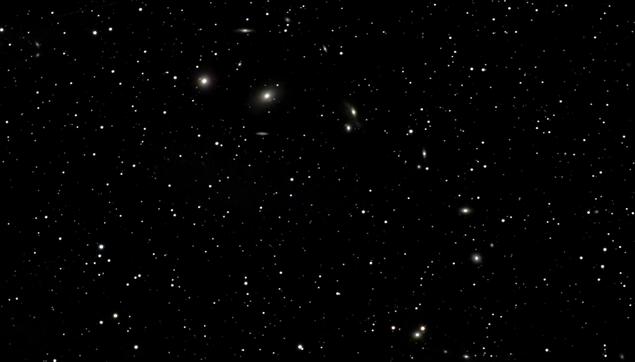Last night we (myself, @leece , and her mum) saw in the New Year with a star party for family and friends.
To make it as accessible as possible, we found a park in Como that is almost completely dark, despite being only a couple of kilometres from the CBD. Adjacent to this park is the Como Croquet Club, so we hired their clubhouse as a base of operations.
Two days before, we got a panicked message from the club, asking if their members could have a gathering of their own - which was fine with us, as long as they did not want to turn on the field lights. So we had twenty odd people turn up, along with about the same number of Croquet Club members. As it turns out, the son of one of my workmates played in high school, and got his family into playing a game, much to the delight of the rather elderly club members.
We started proceedings with a couple of shots of the sun and the current sunspots (Me: "This is what it looks like right now!" 16yo daughter of a work mate: "Well, actually it's what it looked like 18 minutes ago." Me: Applause), and then ate dinner while waiting for the sky to go dark. At 8pm, we got our Dwarf3s aligned, and synchronised their schedules for the night. Then we fired up the DwarfIIs, got them running on some ad-hoc targets, and called everyone out, including many of the Croquet Club members, who were also interested.
We opened with some spectacular views of the Orion Nebula, the Sculptor Galaxy, and the Horsehead Nebula. We also started on a shot the Helix Nebula. Most targets we scheduled 30 minutes for, before the Dwarf3s would move on to new targets.
Aiding us in our explanation of what was on display was @ariaflame , a physicist from Murdoch Uni, and a good friend. We talked about the way clusters and nebulae are formed, how stars aged, and just how far everything is.
Around 8:30, the last of our guests arrived - workmate and Perth Observatory volunteer (and former professional astronomer) Steve Ewing, who had with him a 10" traditional telescope. By about 9pm he had it up and running, and was showing off Saturn and Jupiter, which are too small for our smart telescopes to resolve meaningfully. Steve's enthusiastic explanations of planetary dynamics were a highlight of the evening.
Sadly, as 10pm rolled around the sprinkler systems on the oval started up, and we had to rapidly tear everything down before they reached us. As Leece said - "Rain stopped play."
Despite this, it seems that everyone enjoyed themselves, and we got some great images to share with everyone after.
And that is how we saw in 2025.
#astronomy #StarParty #Astrodon #NYE2024 #Astrophotography #2025 #dwarf3 #dwarfII #SmartTelescope



